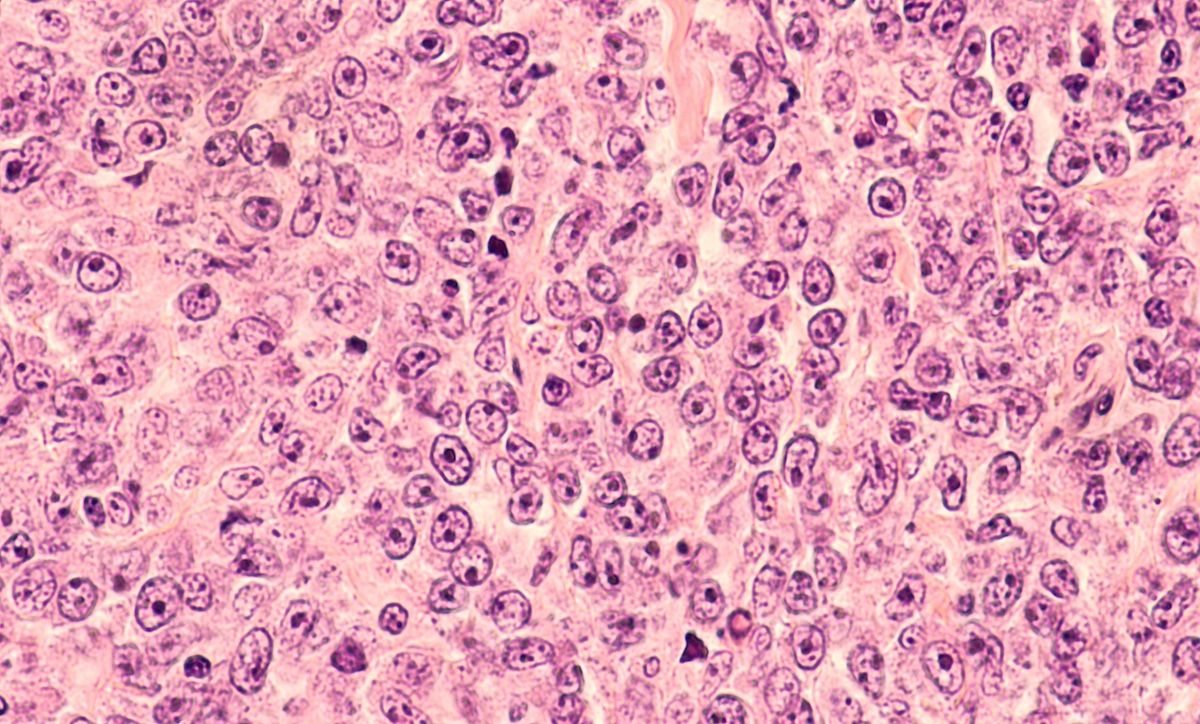- Center on Health Equity & Access
- Clinical
- Health Care Cost
- Health Care Delivery
- Insurance
- Policy
- Technology
- Value-Based Care
Obinutuzumab and Radiation Combo Shows Promise for Refractory DLBCL
A small retrospective study found that combining obinutuzumab with radiation therapy may offer a viable and well-tolerated treatment option for patients with refractory diffuse large B-cell lymphoma (DLBCL).
Obinutuzumab with concurrent radiation was found to be well tolerated and effective in treating relapsed or refractory diffuse large B-cell lymphoma (DLBCL) in a study conducted by researchers from the University of Wisconsin School of Medicine and Public Health. The findings of the retrospective analysis were published in Advances in Radiation Oncology.1
Treatment options for relapsed or refractory DLBCL can include salvage chemotherapy with stem cell transplantation, immunotherapies such as chimeric antigen receptor (CAR) T-cell therapy, or targeted therapies.2 This case series aimed to investigate the combination of obinutuzumab, an anti-CD20 monoclonal antibody, with cytoreductive radiation therapy as a salvage treatment option in patients with refractory DLBCL.1
Obinutuzumab with concurrent radiation was found to be well tolerated and effective in treating relapsed or refractory diffuse large B-cell lymphoma. | Image credit: David A Litman - stock.adobe.com

Researchers conducted a retrospective review of patients treated between 2016 and 2022. Seven patients with refractory DLBCL were included, all receiving external beam radiation to sites of refractory disease along with concurrent and adjuvant obinutuzumab. Patient ages ranged from 52 to 82 years, with a median age of 67. The median number of prior systemic therapies was 2 (range, 1-4).
Treatment with obinutuzumab was administered every 21 days, starting with 1600 mg on days 1 and 8 of the first cycle, followed by 800 mg on day 1 for up to 8 cycles or until disease progression. The radiation doses ranged from 30 to 50 Gy, with a median dose of 44 Gy. Follow-up imaging was obtained within 1 to 3 months after completing radiation treatment and before additional therapy. Progression-free survival (PFS) and overall survival (OS) were calculated from the date radiation was completed to the time of progression or death.
Four out of the 7 patients achieved a complete response at the radiated site on the first postradiation imaging, and the remaining 3 patients had a partial response. The median PFS and OS for the 7 patients were both 30 months.
Only 1 patient experienced subsequent recurrence within the radiation field 6 months after completion of radiation therapy. Three of the 7 patients developed rapidly progressive disease outside of the irradiated site. However, the other 4 patients responded to treatment and didnot go on to develop further disease.
No grade 3 or higher treatment-related toxicities were reported. Six patients experienced a total of 10 acute grade 1 to 2 radiation-related toxicities. Common acute radiation-related toxicities included fatigue (43%), dyspepsia (28%), dermatitis (14%), bloating (14%), nausea (14%), and diarrhea (14%). No late radiation-related toxicity was observed.
Two patients died of unrelated diseases at 30 and 60 months post radiation therapy with no evidence of DLBCL recurrence and without additional therapy. Two patients remained alive without evidence of disease recurrence at 34 and 60 months posttreatment, including 1 patient who had a planned CAR T-cell therapy immediately after radiation and obinutuzumab.
The authors' acknowledge, "The study does have significant limitations, including the small sample size and retrospective nature." Additionally, the variability in prior treatments received by the patients, including stem cell transplant and CAR T-cell therapy, adds heterogeneity to the study population, making it difficult to isolate the effects of the combined obinutuzumab and radiation therapy. The study also did not include patients with widespread, multifocal disease, potentially limiting the findings' applicability to a broader patient population.
"The data presented warrant further prospective evaluation as a stand-alone treatment option for refractory DLBCL or as a bridging therapy before CAR T-cell therapy,” the authors concluded.
References
- Morris BA, Merfeld EC, Burr AR, Bradley KA, Fletcher CD. Combining obinutuzumab with radiation for refractory DLBCL: retrospective safety and efficacy analysis. Adv Radiat Oncol. 2024;9(7):101524. Published April 27, 2024. doi:10.1016/j.adro.2024.101524.
- Treating B-cell non-Hodgkin lymphoma. American Cancer Society. Updated May 31, 2024. Accessed June 7, 2024. https://www.cancer.org/cancer/types/non-hodgkin-lymphoma/treating/b-cell-lymphoma.html
